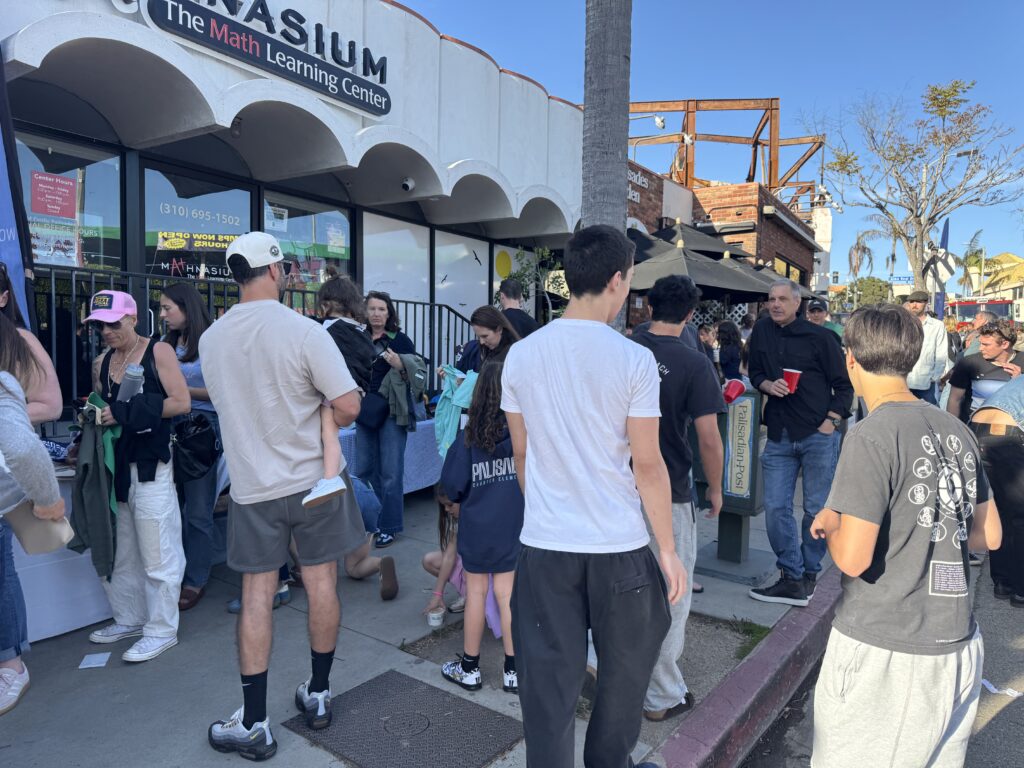A majority of people who still have houses standing in the Huntington Palisades and the Highlands have not moved back to their homes.
The reasons given are the number of trucks/debris removal, lack of remediation, no businesses open and that the air quality in Pacific Palisades is “toxic.”
DEBRIS REMOVAL:
The Army Corps of Engineers has plans to up the amount of debris removal of the destroyed homes. In a March 27 Pacific Palisades Community Council meeting, Lieutenant Nate Weander said, “We’re at 78 percent efficiency and we’re ramping up.” He noted that they had 78 crews on the ground and were clearing 35 properties per day. “We hope to have more than 60 percent [of the 4,397 properties that opted in] cleared by the end of May.”
The California Highway Patrol is ticketing people at blinking red lights in Pacific Palisades, in order to control trucks. But, residents have been affected, too. At least one person living in the Highlands was on the way to work at 6 a.m. and was pulled over and given a ticket at Will Rogers and Sunset because they were told, “You didn’t stop long enough.”
REMEDIATION:
Remediation is underway in several apartment buildings in Pacific Palisades. Several residents have told this editor that they have had trouble getting their insurance to cover the remediation in standing homes.
STORES REOPENING:
Stores open include gas stations, Vons, Moku Restaurant, Palisades Garden Café, Chipotle, Anawalt and Wells Fargo. In order for these places to stay in business – and to encourage other stores to reopen, they need customers.
AIR QUALITY:
The South Coast Air Quality Management District (SCAQMD) set up air monitoring stations in Pacific Palisades starting on January 31.
Site 1 is located at Sunset Boulevard and Los Liones Drive (near Fire Station 23) and a second one, Site 2 at Fire Station 69 (Sunset Boulevard and Carey Street). The sites were chosen because of cleanup activity, proximity to sensitive receptors (people), meteorological conditions and access to power and security click here.
Continuous Monitoring: The sites measure PM2.5 and PM10 hourly. Results are available daily. [PM2.5 is fine particulate matter and Los Angeles has amount the highest levels in the nation. SCAQMD missed the 2012 deadline, and received an extension to 2030 as allowed by the Clean Air Act.] click here.
Scheduled Sampling: Air toxic metals and asbestos are sampled every three days. The monitors collect an air sample continuously over a 24-hour period. The samples are then collected and delivered for expedited laboratory analysis. Data is available approximately one week after collection.
The data from Site 1 between February 21 and March 17 and from Site 2 March 3 to March 17, showed that all sites from March 5, that levels of zinc, arsenic and nickel had not exceeded historic background levels at either site.
The background level data comes from a 2019 project (“Multiple Air Toxics Exposure Study V) that placed a monitor at 1630 N. Main Street, LA 90012. New data is compared to the historical background of the air collected.
How do the results in Pacific Palisades compare with the results of the Los Angeles basin?
Regional Air Toxic Metals
- South Coast AQMD conducts lead measurements at seven locations throughout the Basin, as part of its overall, ongoing air monitoring program.
- Lead, arsenic, and other air toxic metals are also measured at several sites in Los Angeles County.
- These sites are part of South Coast AQMD’s routine air monitoring network and are not specific to the wildfire response.
- Data from these sites should not be used to draw conclusions on levels of air toxics within the burn areas.
- The Palisades and Eaton fires both began on January 7, 2025. Data analyzed between January 7 and January 11 from air monitors impacted by the smoke plume show that air toxic metals (e.g., arsenic and lead) were highly elevated, even compared to other fires in our region that occurred in non-urban areas (i.e., Bridge and Rabbit fires).
- After January 12, air toxic metals had decreased significantly and are now generally similar to pre-fire levels click here.
Because of the oft repeated dangers among some Palisades residents, one person who has been living in the Highlands since February had their blood tested for heavy metals and the results were negative.
Ciela, the Highlands Senior Center, moved its residents temporarily to a new location after the January Palisades Fire. In February after “substantial air and water-quality” testing, residents were moved back into the Highlands facility, according to management.




Any update on the removal of debris from Ocean Woods condo development that completely burned down on Tramonto? Same for a condo bldg on Castellemare that had a roof collapse.
Good news!
Have there been any tests on the water? The signs at the entrances into the Palisades say it is safe to drink, but I’m curious if and how they are treating it (i.e., chlorine, etc.).
No leaf blowers……Keep dust etc minimized. A moratorium on ANY leaf blowers is wise.